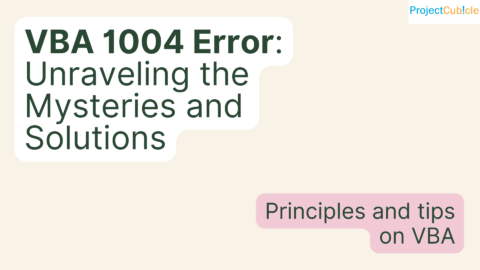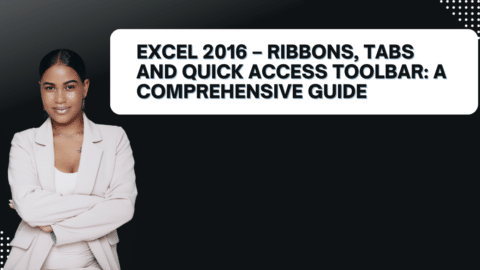Create Templates in Excel: A Comprehensive Guide for Beginners
Are you tired of manually creating spreadsheets every time you need to track data or create a report? Excel templates can save you a lot of time and effort by providing pre-designed worksheets that you can easily modify to fit your needs. In this article, we will walk you through the process of creating templates in Excel, from selecting the right template to customizing it to your specific requirements.
Table of Contents
What are Excel templates?
Excel templates are pre-designed spreadsheets that you can use to create various types of documents, such as budgets, invoices, and calendars. They come with built-in formulas and formatting, so you don’t have to start from scratch every time you need to create a new document.
How to create a template in Excel?
Creating a template in Excel is a simple process that can save you a lot of time and effort in the long run. Here’s how to do it:
Step 1: Select a template
Excel offers a wide variety of templates to choose from, ranging from simple to complex. To select a template, go to the File menu, click on New, and then select the template category that best fits your needs.
Step 2: Customize the template
Once you have selected a template, you can customize it to fit your specific requirements. This involves adding or removing columns, changing formulas, and adjusting formatting. To customize a template, simply click on the cells you want to modify and make the necessary changes.
Step 3: Save the template
After you have customized the template, save it by going to the File menu and clicking on Save As. Choose a name for your template, select the folder where you want to save it, and select Excel Template (*.xltx) as the file type.
Advantages of using Excel templates
There are several advantages of using Excel templates, including:
Saves time
Excel templates can save you a lot of time by providing pre-designed spreadsheets that you can easily modify to fit your needs. Also, this eliminates the need to start from scratch every time you need to create a new document.
Ensures consistency
Using templates ensures consistency in your documents. Since the formatting and formulas are pre-designed, you don’t have to worry about making errors or inconsistencies.
Increases productivity
By saving time and ensuring consistency, Excel templates can help increase your productivity. This allows you to focus on more important tasks, such as analyzing data and making decisions.
Provides flexibility
Excel templates are highly flexible and can be customized to fit your specific requirements. This means that you can use them for a wide variety of tasks, from tracking expenses to creating project plans.
Tips for creating effective Excel templates
Here are some tips for creating effective Excel templates:
Keep it simple
Simplicity is key when creating templates. Keep the layout and design clean and easy to read, and avoid cluttering the worksheet with unnecessary information.
Use conditional formatting
Conditional formatting can help highlight important data and make it stand out. Use it to draw attention to key metrics and trends.
Add charts and graphs
Charts and graphs can help visualize data and make it easier to understand. Use them to display trends and patterns in your data.
Test the template
Before using the template, make sure to test it thoroughly to ensure that it works as expected. Also, check for errors and inconsistencies, and make any necessary adjustments.
Conclusion
Excel templates are a powerful tool that can save you time and effort when creating spreadsheets. By following the steps outlined in this article, you can create effective templates that meet your specific requirements. Also, remember to keep it simple, use conditional formatting, add charts and graphs, and test the template before using it.
FAQs
- Can I create my own Excel templates? Yes, you can create your own Excel templates. In fact, creating your own templates allows you to customize them to fit your specific needs and requirements.
- Can I edit an existing Excel template? Yes, you can edit an existing Excel template by opening it and making the necessary changes. However, it’s important to save the template with a new name so that you don’t overwrite the original template.
- Can I share Excel templates with others? Yes, you can share Excel templates with others by sending them the template file or by uploading it to a shared drive. This allows others to use the same template and ensures consistency across the organization.
- Can I password-protect my Excel templates? Yes, you can password-protect your Excel templates to prevent unauthorized access. To do this, go to the File menu, click on Info, and select Protect Workbook. Choose a password and select the options you want to apply.
- Can I use Excel templates on a Mac? Yes, Excel templates can be used on a Mac. Simply open the template file in Excel for Mac and customize it as needed. The process for creating and using templates is the same on a Mac as it is on a PC.
Hello, I’m Cansu, a professional dedicated to creating Excel tutorials, specifically catering to the needs of B2B professionals. With a passion for data analysis and a deep understanding of Microsoft Excel, I have built a reputation for providing comprehensive and user-friendly tutorials that empower businesses to harness the full potential of this powerful software.
I have always been fascinated by the intricate world of numbers and the ability of Excel to transform raw data into meaningful insights. Throughout my career, I have honed my data manipulation, visualization, and automation skills, enabling me to streamline complex processes and drive efficiency in various industries.
As a B2B specialist, I recognize the unique challenges that professionals face when managing and analyzing large volumes of data. With this understanding, I create tutorials tailored to businesses’ specific needs, offering practical solutions to enhance productivity, improve decision-making, and optimize workflows.
My tutorials cover various topics, including advanced formulas and functions, data modeling, pivot tables, macros, and data visualization techniques. I strive to explain complex concepts in a clear and accessible manner, ensuring that even those with limited Excel experience can grasp the concepts and apply them effectively in their work.
In addition to my tutorial work, I actively engage with the Excel community through workshops, webinars, and online forums. I believe in the power of knowledge sharing and collaborative learning, and I am committed to helping professionals unlock their full potential by mastering Excel.
With a strong track record of success and a growing community of satisfied learners, I continue to expand my repertoire of Excel tutorials, keeping up with the latest advancements and features in the software. I aim to empower businesses with the skills and tools they need to thrive in today’s data-driven world.
Suppose you are a B2B professional looking to enhance your Excel skills or a business seeking to improve data management practices. In that case, I invite you to join me on this journey of exploration and mastery. Let’s unlock the true potential of Excel together!
https://www.linkedin.com/in/cansuaydinim/










